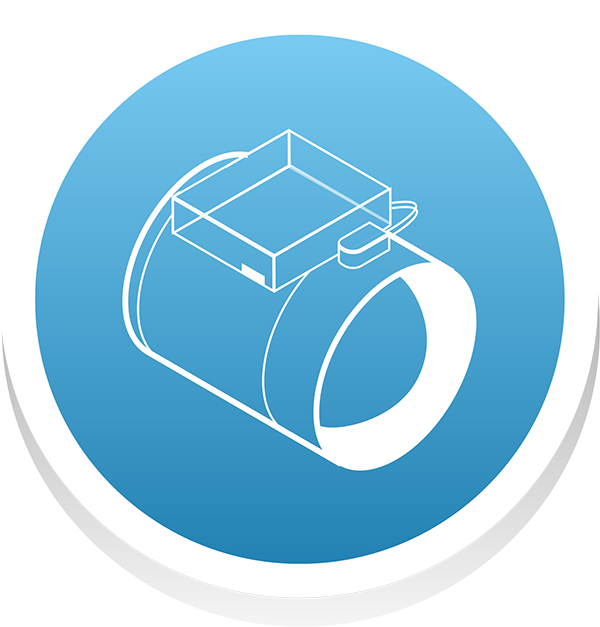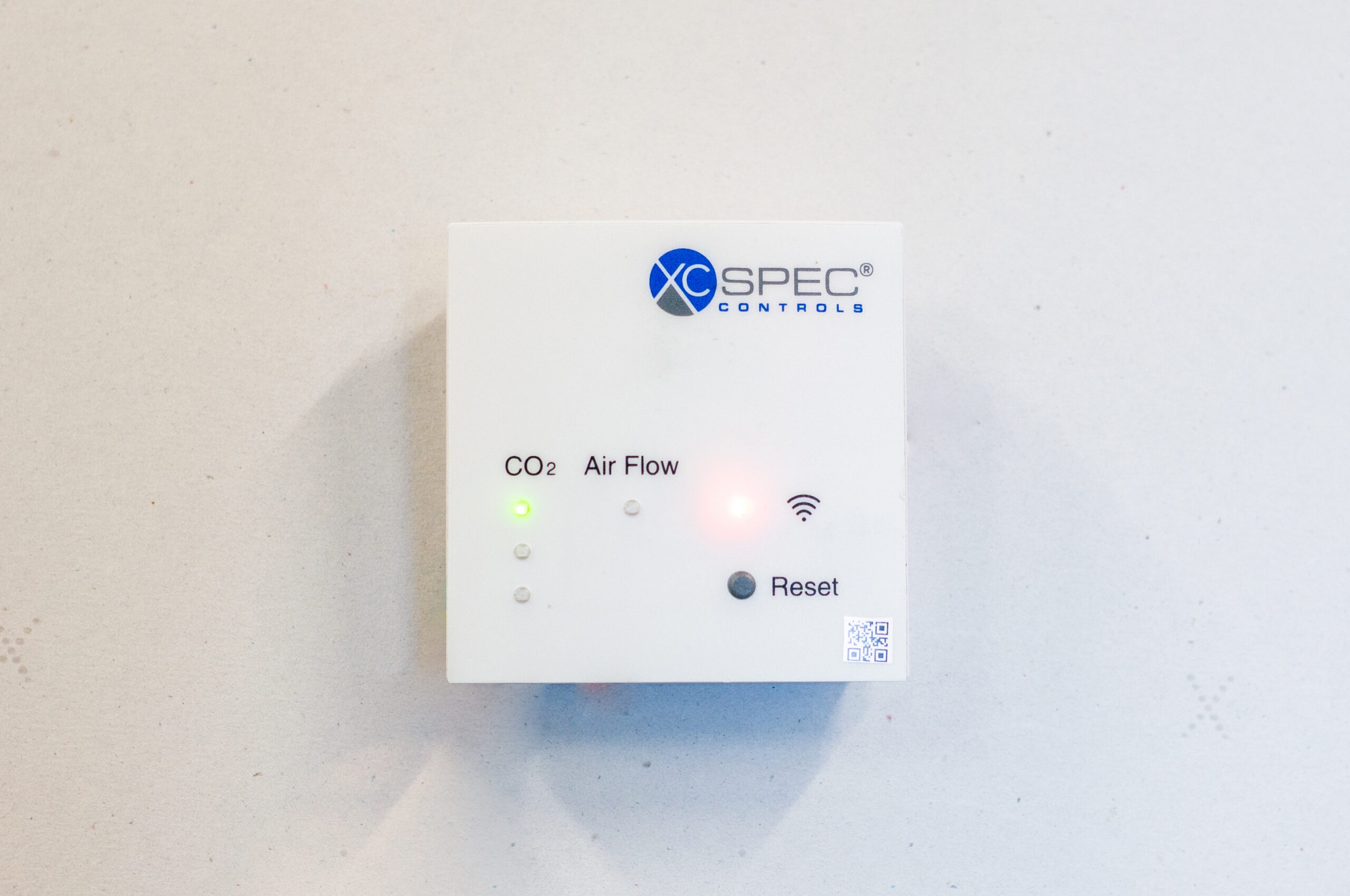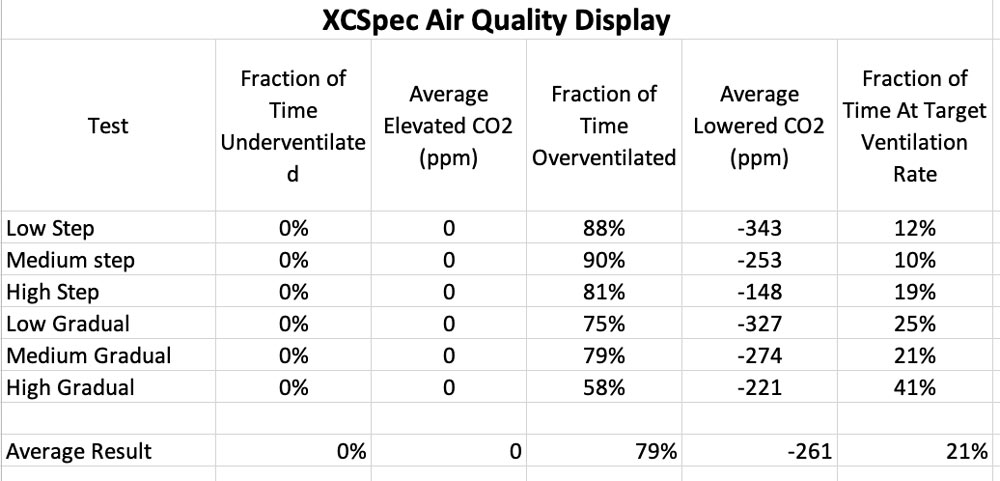
XCSpec Air Quality Display
Demand Control Ventilation (DCV) controllers integrate with the building ventilation system to modulate the amount of outdoor air based on input from a CO2 sensor. They can be used to save energy during low occupancy and improve indoor air quality during high occupancy.
Learn MoreIf you are experiencing issues with the comparison tool, please disable your adblocker.

XCSpec Air Quality Display
Ventilation system controller with economizer and CO2-based demand control ventilation capabilities. The device may be configured and monitored wirelessly with XCSpec’s Mini Access Point.
Hub Highlights:
- LED status indicators, information and commissioning available through integrated WiFi.
- WiFi connection but no supported building management system (BMS) protocols.
- Poor performance under Hub simulated occupancy profiles.
Last Edited on: Jul 26, 2022
| Model Number | Air Quality Display |
| Power Supply | 24 VAC, 50/60 Hz |
| CO2 Sensor Compatibility | Only compatible with XCSpec sensors |
| Controller CO2 Sensor Input Signal Types | Wifi to cloud-based interface (requires gateway) |
| Actuator Signal Output Types | 0-10 VDC |
| Nominal Power Consumption | Not specified. Independent testing showed average consumption of 15VA. |
| Economizer Control Options | None |
| Other Inputs | None |
| Other Outputs | None |
| Controller Configuration Method | Wifi with proprietary software |
| Controller Response to CO2 Sensor Failure/Power Loss | The control logic stops running. DCV settings are maintained in memory and restored when power is restored. |
| Manufacturer Reported Control Algorithm Details | None found |
| Supported Communication Protocols | Wi-Fi communication (requires gateway) |
Last Edited on: Jul 26, 2022
| Date of Test | September 2021 |
| Number of Tests | 6 |
| Setting | N/A |
| Average Fraction of Time Underventilated | 0% |
| Average Elevated CO2 During Underventilation (ppm) | N/A |
| Average Fraction of Time Overventilated | 79% |
| Average Lowered CO2 During Overventilation (ppm) | -261 |
| Average Fraction of Time At Target Ventilation Rate | 21% |
| DCVC Full Results | See Table |
Last Edited on: Jul 26, 2022
User interface
Describe interface for commissioning.
Web interface
User interface
Describe the settings for the device.
Minimum damper position, maximum damper position, setpoint
User interface
Does the controller have alarm capability to notify facilities of a problem? If yes, describe.
Yes - Alarm information is stored on the device. Alarm flashes LED on device.
Installation
Does the controller require specialized software for installation? If yes, describe
Yes - Requires logging into a local WiFi portal to configure
Installation
Does the controller require specialized training for installation? If yes, describe
No
Installation
What is the resolution for CO2 setpoint?
Any interval
Installation
How is damper position specified?
Percentage
Installation
Can the CO2 sensor be universal or manufacturer specific?
Manufacturer specific
Installation
Can you specify sensor calibration to correct for sensor error in the DCV system controller?
The sensor can be forced to calibrate, auto-calibration can be turned on and off
Integration capabilities
Can the controller interface (beyond dry contacts) with a building automation system (BAS)? If yes, describe if integration capabilities are vendor specific.
Yes - Through a 0-10V output or via the XC Spec DCV Pro controller
Integration capabilities
If the controller can interface with a BAS, is additional hardware required? If yes, describe.
No
Operation
Does the controller require on-going maintenance? If yes, describe?
No
Operation
Does the controller require service contracts for ongoing data access? If yes, describe
No
Integration capabilities, Reporting capabilities
How can the controller data logged? If proprietary software, describe (what type of account is needed, what logging intervals are available, what does it look like, and describe its capabilities including data download capabilities).
Wifi with proprietary software. Data logging interval is 30 seconds. The phone app allows viewing limited historical data in a table. Max CO2 concentration for the past five occupied periods is available. A Wifi portal allows viewing of live data and downloading the data through to a CSV file. Sensor must be connected to the internet. XCSpec partners, EnerAllies and Environsense, also have a web portal that supports CO2 (and other parameters) logging and report generation.
